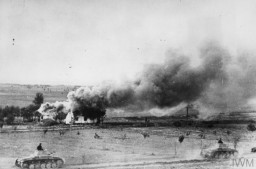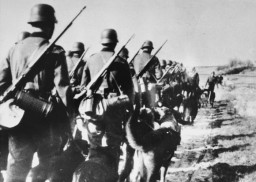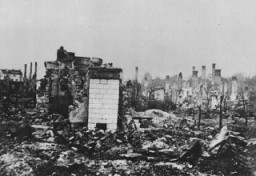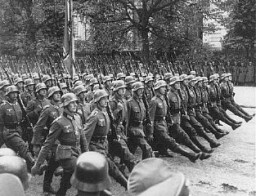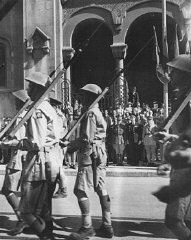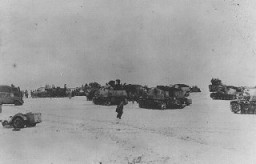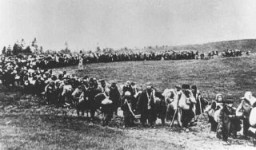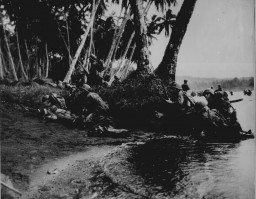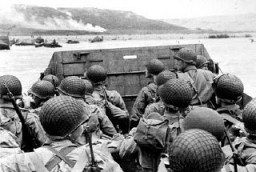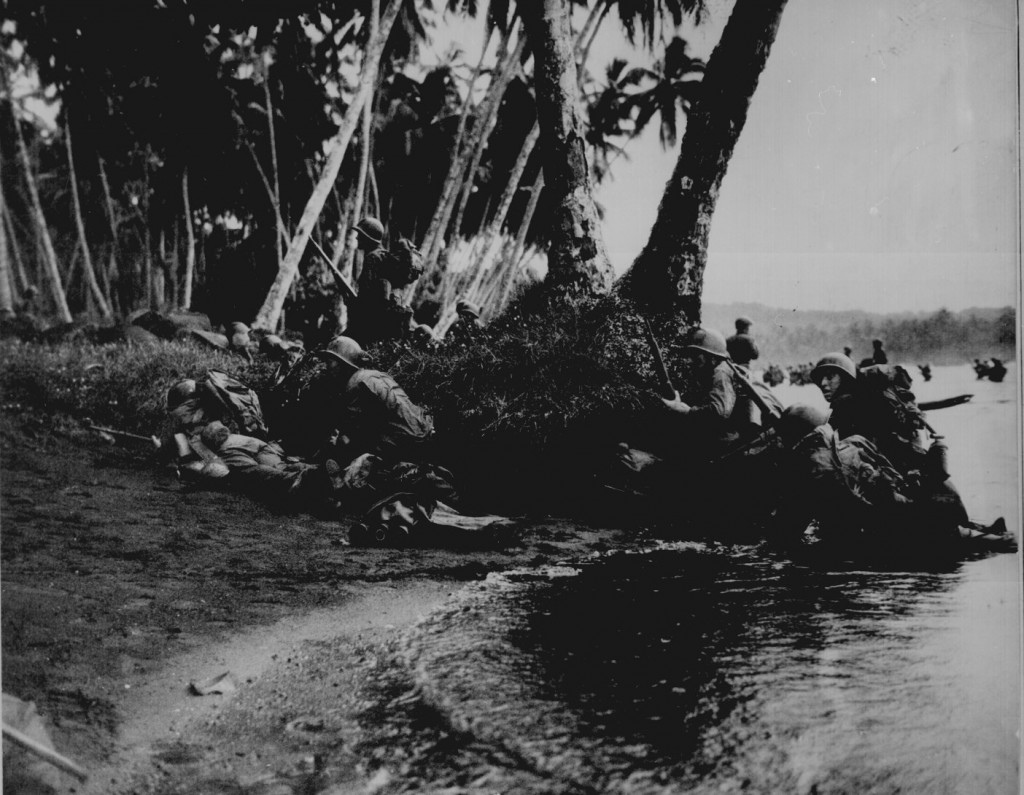
World War II in the Pacific
The Japanese attack on Pearl Harbor on December 7, 1941, was the impetus for the United States’ entrance into World War II.
-
1
The United States declared war on Japan the following day, December 8. On December 11, Nazi Germany, Japan’s Axis ally, declared war on the United States. This forced the United States to enter a two-front war.
-
2
In the first months after the attack on Pearl Harbor, Japan had great military success. A turning point came in June 1942 at the Battle of Midway. It was the first time that Allied forces were able to make headway in the Pacific.
-
3
In August 1945, the United States dropped atomic bombs on the Japanese cities of Hiroshima and Nagasaki. As a result, approximately 120,000 civilians died. Japan formally surrendered in September 1945.
Origins
Japanese expansion in East Asia began in 1931 with the invasion of Manchuria and continued in 1937 with a brutal attack on China. On September 27, 1940, Japan signed the Tripartite Pact with Germany and Italy, thus entering the military alliance known as the "Axis." Seeking to curb Japanese aggression and force a withdrawal of Japanese forces from Manchuria and China, the United States imposed economic sanctions on Japan. Faced with severe shortages of oil and other natural resources and driven by the ambition to displace the United States as the dominant Pacific power, Japan decided to attack the United States and British forces in Asia and seize the resources of Southeast Asia.
Japan launched a surprise attack on the United States Pacific fleet at Pearl Harbor, Hawaii, on December 7, 1941. The attack severely damaged the American fleet and prevented, at least for the short term, serious American interference with Japanese military operations. In response, the United States declared war on Japan. Following Germany's declaration of war on the United States, the United States also declared war on Germany.
The United States Declares War
After the attack on Pearl Harbor, Japan achieved a long series of military successes. In December 1941, Guam, Wake Island, and Hong Kong fell to the Japanese, followed in the first half of 1942 by the Philippines, the Dutch East Indies (Indonesia), Malaya, Singapore, and Burma. Japanese troops also invaded neutral Thailand and pressured its leaders to declare war on the United States and Great Britain. Only in mid-1942 were Australian and New Zealander forces in New Guinea and British forces in India able to halt the Japanese advance.
The turning point in the Pacific war came with the American naval victory in the Battle of Midway in June 1942. The Japanese fleet sustained heavy losses and was turned back. In August 1942, American forces attacked the Japanese in the Solomon Islands, forcing a costly withdrawal of Japanese forces from the island of Guadalcanal in February 1943. Allied forces slowly gained naval and air supremacy in the Pacific, and moved methodically from island to island, conquering them and often sustaining significant casualties. The Japanese, however, successfully defended their positions on the Chinese mainland until 1945.
In October 1944, American forces began retaking the Philippines from Japanese troops, who surrendered in August 1945. That same year, the United States Army Air Forces launched a strategic bombing campaign against Japan. British forces recaptured Burma. In early 1945, American forces suffered heavy losses during the invasions of Iwo Jima (February) and Okinawa (April), an island of strategic importance off the coast of the Japanese home islands. Despite these casualties and suicidal Japanese air attacks, known as Kamikaze attacks, American forces conquered Okinawa in mid-June 1945.
Atomic Bomb
On August 6, 1945, the United States Army Air Force dropped an atomic bomb on the Japanese city of Hiroshima. Tens of thousands of people died in the initial explosion, and many more died later from radiation exposure. Three days later, the United States dropped a bomb on the Japanese city of Nagasaki. Estimates vary, but at least 120,000 civilians died as a result of the two blasts. On August 8, the Soviet Union declared war on Japan and invaded Japanese-occupied Manchuria.
After Japan agreed to surrender on August 14, 1945, American forces began to occupy Japan. Japan formally surrendered to the United States, Great Britain, and the Soviet Union on September 2, 1945.
Series: World War II
Critical Thinking Questions
- Investigate the context of war and mass murder in Europe at the time the United States entered the war.
- Did the course of the war in the Pacific affect the possibility of rescue of the endangered Jews by the Allies and other nations?
- How and why did the United States government relocate Japanese-Americans from the Pacific coast in 1942?
